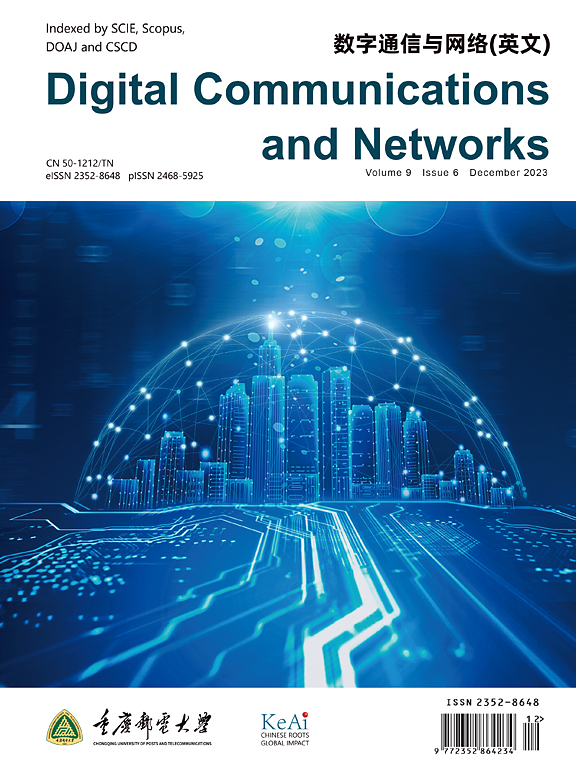Game-theoretic physical layer authentication for spoofing detection in internet of things
IF 7.5
2区 计算机科学
Q1 TELECOMMUNICATIONS
引用次数: 0
Abstract
The Internet of Things (IoT) has permeated various fields relevant to our lives. In these applications, countless IoT devices transmit vast amounts of data, which often carry important and private information. To prevent malicious users from spoofing these information, the first critical step is effective authentication. Physical Layer Authentication (PLA) employs unique characteristics inherent to wireless signals and physical devices and is promising in the IoT due to its flexibility, low complexity, and transparency to higher layer protocols. In this paper, the focus is on the interaction between multiple malicious spoofers and legitimate receivers in the PLA process. First, the interaction is formulated as a static spoof detection game by including the spoofers and receivers as players. The best authentication threshold of the receiver and the attack rate of the spoofers are consideblack as Nash Equilibrium (NE). Then, closed-form expressions are derived for all NEs in the static environment in three cases: multiplayer games, zero-sum games with collisions, and zero-sum games without collisions. Considering the dynamic environment, a Multi-Agent Deep Deterministic Policy Gradient (MADDPG) algorithm is proposed to analyze the interactions of receiver and spoofers. Last, comprehensive simulation experiments are conducted and demonstrate the impact of environmental parameters on the NEs, which provides guidance to design effective PLA schemes.
物联网中用于欺骗检测的博弈论物理层认证
物联网(IoT)已经渗透到与我们生活相关的各个领域。在这些应用中,无数的物联网设备传输大量数据,这些数据往往包含重要的私人信息。为了防止恶意用户欺骗这些信息,有效的身份验证是关键的第一步。物理层身份验证(PLA)利用了无线信号和物理设备固有的独特特性,由于其灵活性、低复杂性以及对上层协议的透明性,在物联网领域大有可为。本文的重点是 PLA 过程中多个恶意欺骗者与合法接收者之间的交互。首先,通过将欺骗者和接收者作为博弈者,将互动制定为静态欺骗检测博弈。接收方的最佳认证阈值和欺骗者的攻击率被视为纳什均衡(Nash Equilibrium,NE)。然后,在静态环境中,在多人博弈、有碰撞的零和博弈和无碰撞的零和博弈这三种情况下,推导出了所有 NE 的闭式表达式。考虑到动态环境,提出了一种多代理深度确定性策略梯度(MADDPG)算法来分析接收者和欺骗者之间的相互作用。最后,进行了全面的仿真实验,证明了环境参数对近地网的影响,为设计有效的 PLA 方案提供了指导。
本文章由计算机程序翻译,如有差异,请以英文原文为准。
求助全文
约1分钟内获得全文
求助全文
来源期刊

Digital Communications and Networks
Computer Science-Hardware and Architecture
CiteScore
12.80
自引率
5.10%
发文量
915
审稿时长
30 weeks
期刊介绍:
Digital Communications and Networks is a prestigious journal that emphasizes on communication systems and networks. We publish only top-notch original articles and authoritative reviews, which undergo rigorous peer-review. We are proud to announce that all our articles are fully Open Access and can be accessed on ScienceDirect. Our journal is recognized and indexed by eminent databases such as the Science Citation Index Expanded (SCIE) and Scopus.
In addition to regular articles, we may also consider exceptional conference papers that have been significantly expanded. Furthermore, we periodically release special issues that focus on specific aspects of the field.
In conclusion, Digital Communications and Networks is a leading journal that guarantees exceptional quality and accessibility for researchers and scholars in the field of communication systems and networks.
 求助内容:
求助内容: 应助结果提醒方式:
应助结果提醒方式:


